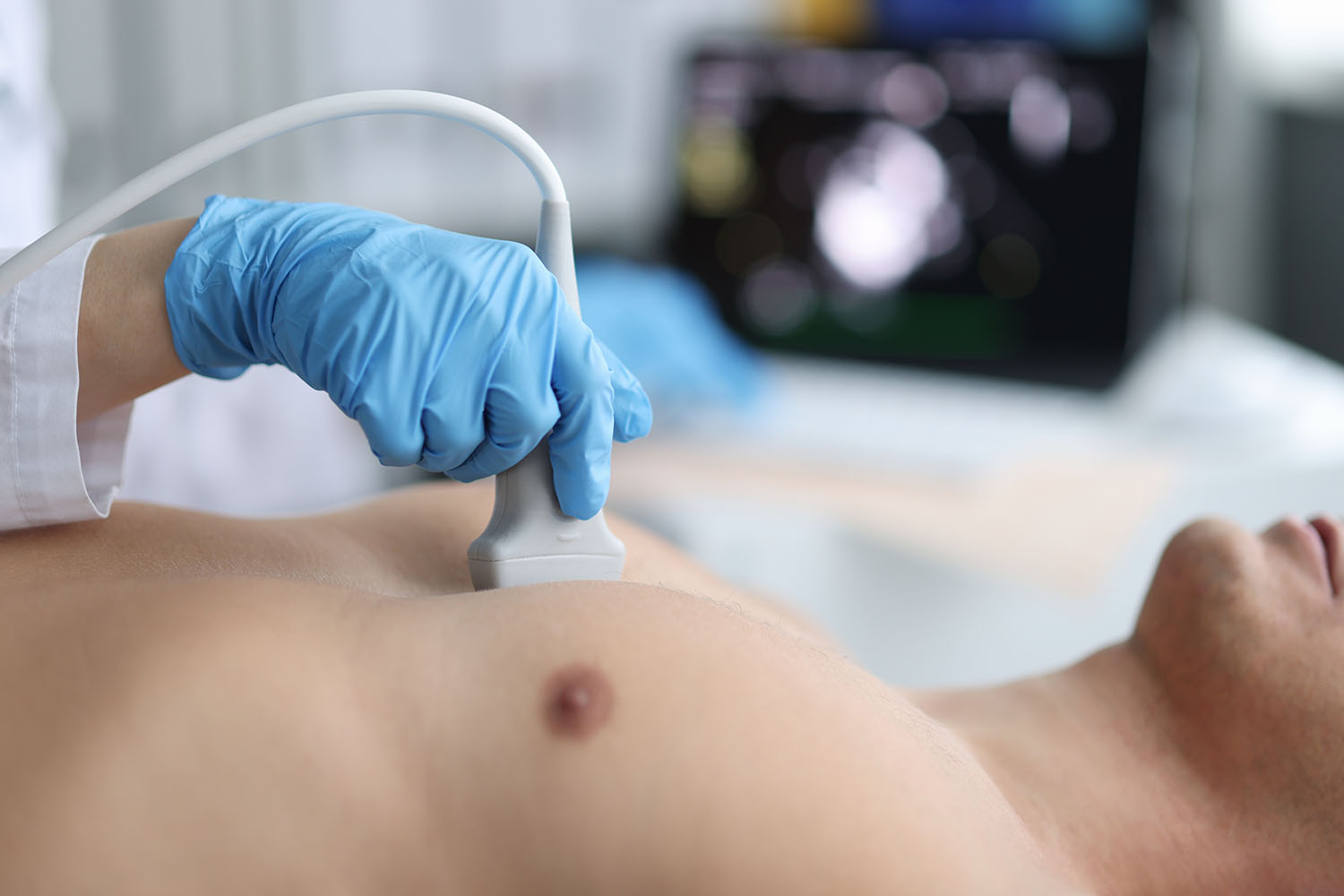Overview
Echocardiography, commonly known as an echocardiogram, is a crucial diagnostic tool in cardiology that uses ultrasound waves to create images of the heart. This non-invasive test allows healthcare professionals to visualize the heart’s structure, assess its function, and identify various cardiac conditions. Over the years, extensive international research has underscored the significance of echocardiograms in diagnosing and managing heart diseases.

What is an Echocardiogram?
An echocardiogram is a type of ultrasound test that uses high-frequency sound waves to produce detailed images of the heart. This test can show the size and shape of the heart, the condition of the heart chambers and valves, and the flow of blood through the heart. There are several types of echocardiograms, including:
Transthoracic Echocardiogram (TTE): The most common type, where the ultrasound probe is placed on the chest.
Transesophageal Echocardiogram (TEE): The ultrasound probe is inserted into the esophagus to get closer images of the heart.
Stress Echocardiogram: Performed during or immediately after exercise to assess how the heart functions under stress.
Doppler Echocardiogram: Measures the direction and speed of blood flow through the heart.
The Importance of Echocardiograms in Cardiac Care
Echocardiograms are vital for diagnosing a wide range of heart conditions. They help detect issues such as heart valve problems, congenital heart defects, cardiomyopathies, pericardial disease, and heart failure. By providing real-time images and data, echocardiograms allow for accurate assessment and timely intervention.
International Research on Echocardiograms
International studies have consistently highlighted the benefits and advancements in echocardiography. Research from institutions worldwide has contributed to enhancing the accuracy, efficacy, and applicability of echocardiograms in clinical practice.
A study conducted in Europe emphasized the role of echocardiography in early detection of cardiomyopathies and its impact on improving patient outcomes through early intervention . Another significant research from the United States highlighted the advancements in 3D echocardiography, which provides more precise and detailed images of the heart, aiding in complex surgical planning and decision-making .
In Asia, researchers have focused on the integration of artificial intelligence (AI) with echocardiography to improve diagnostic accuracy and reduce the time required for image analysis. This technological advancement is paving the way for more efficient cardiac care, especially in regions with limited access to expert cardiologists .
Benefits and Limitations of Echocardiograms
Echocardiograms offer numerous benefits, including being non-invasive, painless, and relatively quick. They do not use ionizing radiation, making them safer than other imaging modalities like CT scans. However, echocardiograms also have limitations. Image quality can be affected by factors such as obesity, chest wall deformities, and lung disease. Additionally, the interpretation of echocardiographic images requires specialized training and experience.
The Future of Echocardiography
The future of echocardiography looks promising with ongoing research and technological advancements. The integration of AI and machine learning algorithms is expected to enhance image analysis and diagnostic accuracy further. Portable echocardiogram devices are becoming more accessible, enabling point-of-care diagnostics in remote and underserved areas. These advancements will continue to expand the reach and efficacy of echocardiograms, making cardiac care more accessible and precise.
Echocardiograms have revolutionized the field of cardiology, providing critical insights into heart health and aiding in the early detection and management of cardiac conditions. International research continues to enhance our understanding and utilization of this invaluable diagnostic tool. As technology evolves, echocardiography will undoubtedly play an even more pivotal role in improving cardiac care worldwide.
By leveraging the power of echocardiograms, healthcare providers can ensure better patient outcomes, making heart disease management more effective and accessible for all.


